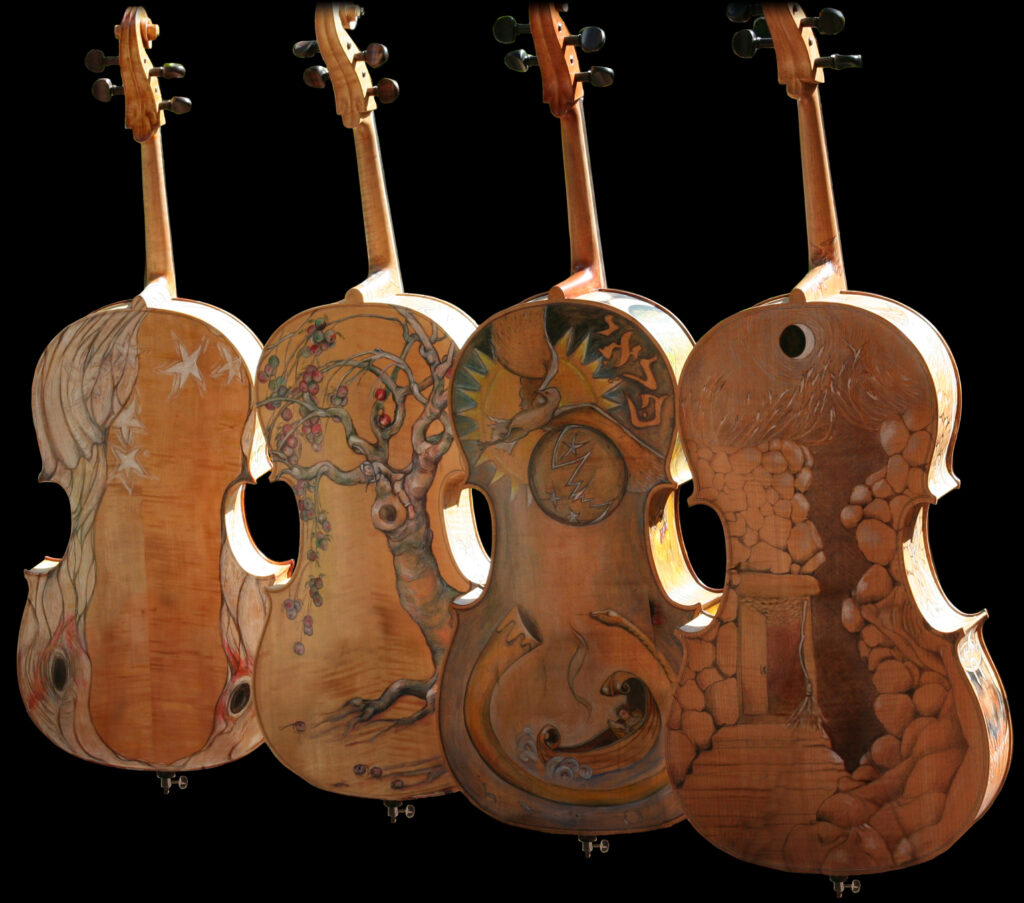Incidental Music
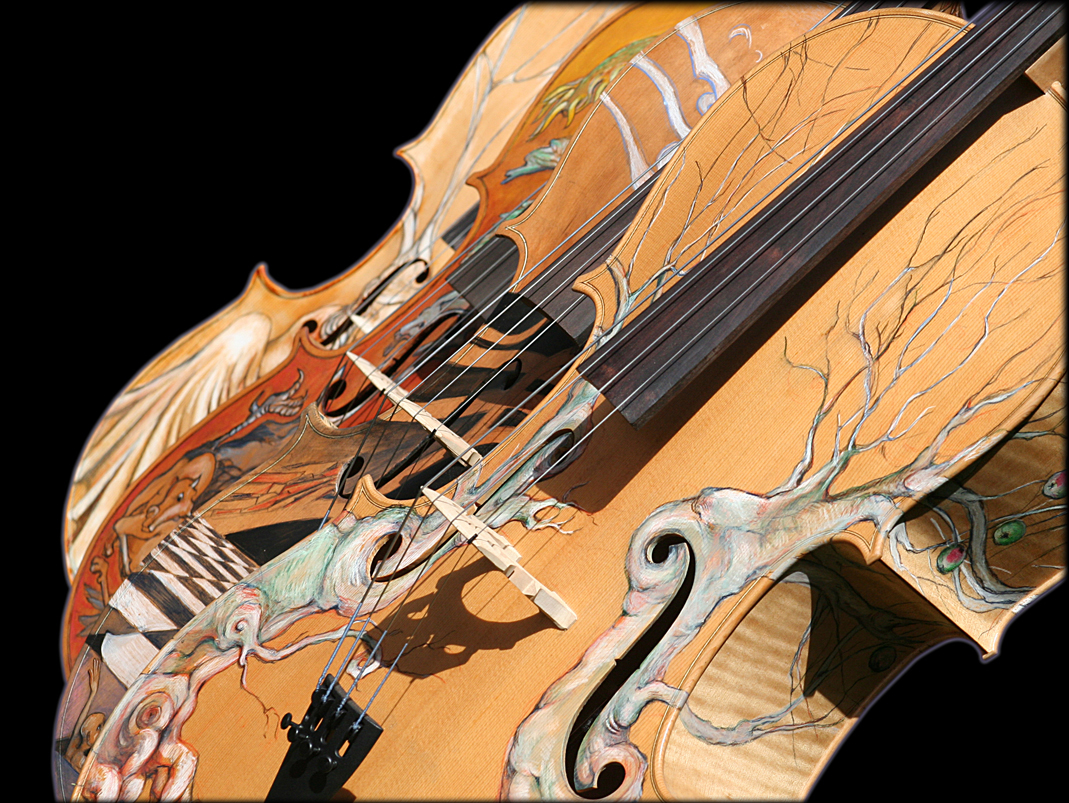
‘A terrible suffering was anciently seared into this cloth. You will feel that by its touch. Its revelation is undeniable. But I warn you, there is no poetry sad enough to sing its song, and no cello sad enough to play it. Not a whole quartet of them.’
The story of Mother Moth originated in music. It began with the ‘Goblin Song’:
Deep in the earth are their fires of darkness, furnace and forge:
Smouldering gloom,
Windowless room,
Their hammers ring to a rhythm of doom.
The breathing of the mountain,
The source of every fountain
Hidden from the sun and moon.
Iron-shod their feet of softness silently tread
Tunnels of black,
Barrel and sack
They carry precious on the hunch of their back:
Children born of cunning,
Feet forever running
From the whip’s iron crack.
‘We are the sons of stone,’
Sing the goblin voices:
‘We are not flesh and bone,
We belong to places
Far from the light,
Born of the night,
The sun shall never know us.’
Slaves with no master in the starless kingdom, dance in their chains.
From underground
Their voices sound,
And blood runs cold and every heart begins to pound.
Ancient fears awaken,
The valley floor is shaken,
The mountains echo all around.
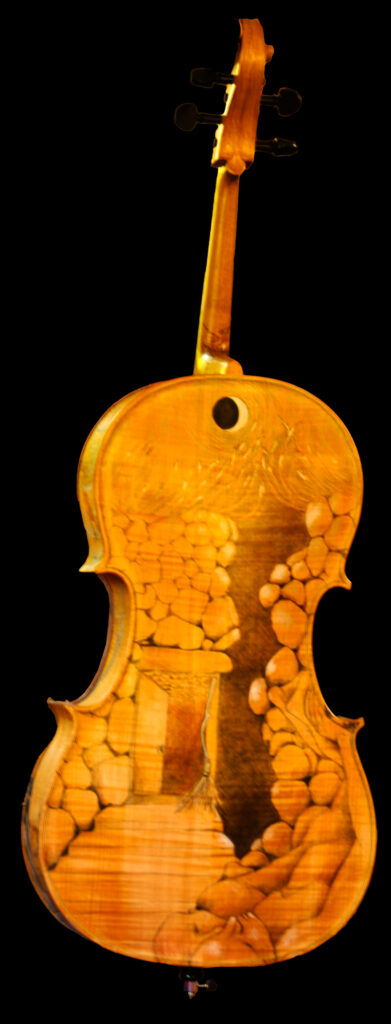
Francesca Bell illustrated the backs, fronts and sides of four cellos with designs reflecting themes from Mother Moth. Each cello represents one of the book’s entwined worlds: the Goblin cello, the Tree cello, the Moth cello, and the Emblem cello.
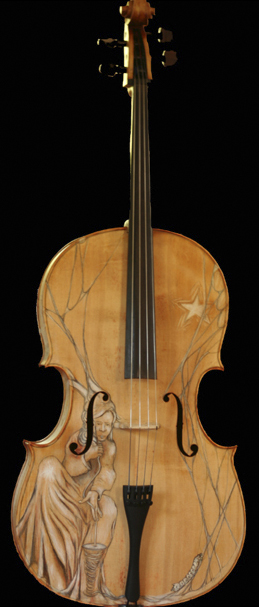
The In f able
On the Moth cello, a mother sits with distaff and spindle. She works blindly, weaving a perpetual circle, of which she herself, her hair, dress and fingers, all form part. Her hands manipulate the fibre to form thread. The thread, upon whose lines the music resonates, is taken up by the industrious silkworm, who weaves a golden chamber in which to sleep. From it, the devouring moth emerges to chew holes in the fabric, the ‘material’, of the world. But this destructive act lets light shine through. The light begins in glimpses of stars, ragged like bright holes. The powder of the moth’s fluttering wings equates to the powder of resin, enabling the cello bow to set the string in motion. The music is made from the dust of destruction. The moth flies on torn and shredded wings, till its body becomes too heavy to rise. The frayed thread descends again, in winged, sticky cobwebs that obscure the light. The web returns to the spinner’s hair, wrapped around the distaff, and all begins again. Imagination projects images, as the silkworm lets out its golden thread. If there is a point of origin to the circle, it is at the f-hole replacing the distaff. The f-hole is the ‘ineffable’, the intersection, where love, thought and material world, like the music from the cello, bubble into existence as one, from a miraculous emptiness.
On the rear of the Emblem cello, Elspeth’s imaginative understanding of the Mysterium Magicum rises from her cosy boat. There is security and adventure. She is confined within an open Ouroboros, whose tail forms the bell, the speaking end, of an ancient serpent, a bass wind instrument. The Hebrew word on the cello’s shoulder, ‘Aleph Lamed Pe’, ‘secret, marvelous, wonderful’, celebrates Elspeth’s discovery. The bird flies free of the cogs of the mechanised universe.
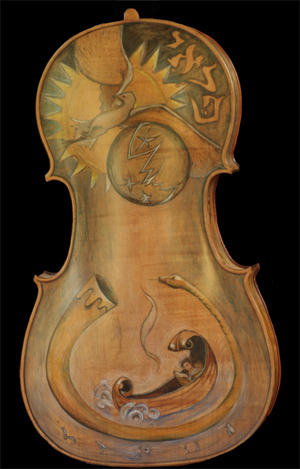
Incidental Music to ‘Mother Moth’
Author-cellist Adrian Bell developed themes from Mother Moth musically in arrangements for cello quartet. Six were performed at the book’s launch and exhibition of its colour plates, held at University Gallery, University of Newcastle, Australia, in May, 2011:
Goblin March and Goblin Song
Catched 4Square
The Spidersilk Wedding
The Amazing Silkworm Dance
Piping Down the Valleys Wild
Halloween
A further four themes include The Legend of Parson’s Peril, Happy as the Grass Was Green, Mephisto the Mystifying and Smelling the Moon.
Adrian has made many of his compositions and arrangements available as sheet music download at adrianbellmusic.com.
To learn more about the Mother Moth cellos, please visit francescabell.com
